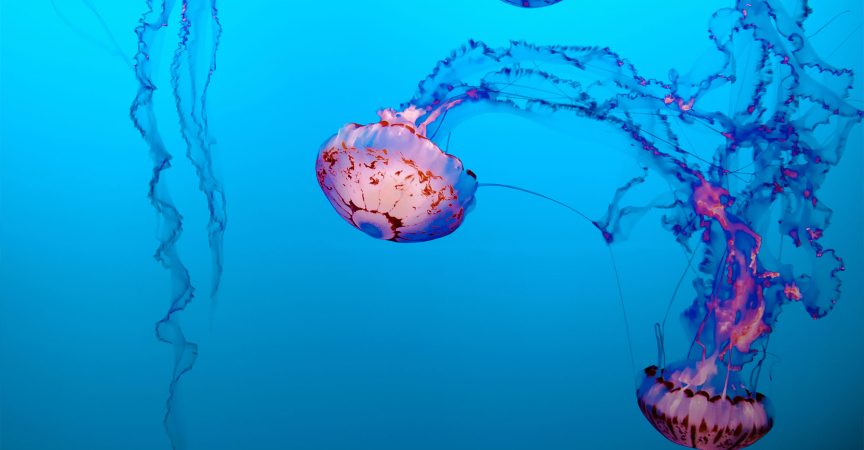Ingredient spotlight: Jellyfish – older than dinosaurs and edible
Chances are, you haven’t prepared a jellyfish steak today or tossed a jellyfish salad, but jellyfish could be in Canada’s—and the world’s—culinary future. Enjoyed in parts of Asia for centuries, jellyfish are now being fished the world over. Canada experimented with two jellyfish fisheries: one on the west coast in the 1980s and one on the east coast in the 2000s. Both ultimately closed because the main species of jellyfish in Canadian waters are moon jellyfish, a species that is not widely sought after for eating. The United States has had success in jellyfishing in recent years, especially with cannonball jellies, shipping most of its catch to Asian markets, where jellyfish are regularly eaten in salads, soups, and even burgers.
Lucas Brotz, a marine biologist at the University of British Columbia, brought the focus of his studies to jellyfish when his supervisor—renowned marine biologist Daniel Pauly—encouraged him to look into whether jellyfish populations are increasing worldwide. It’s a question that is stumping jellyfish scientists.“Jellyfish populations are definitely changing, and most places where their populations are changing, they’re increasing,” says Brotz. “In many cases, it seems to be because of human impact on the ocean: invasive species, global warming, pollution, coastal development and overfishing—those things combined can create conditions that are less favorable to fish and more favorable to jellyfish.”
With an abundance of jellyfish and a dearth of overfished stocks, eating this “celery of the sea” seems like it could be a good solution—or at least, it might take advantage of an otherwise problematic situation. Jellyfish are mostly water and collagen. Jellyfish contain zero fat and are very high in protein, so it’s no surprise that they are sometimes marketed as a diet food in Asia. The meat is crunchy and quite tasteless, absorbing the flavors of its environment.
Currently, one of the biggest barriers to jellyfish consumption is the processing method. Jellyfish are very delicate, and cannot be frozen like other meats. Instead, the jellies are preserved using a salt and alum solution, and this process leaves behind traces of aluminum. “I’ve had jellyfish prepared by gourmet chefs, and jellyfish straight out of the package,” says Brotz. “The best jellyfish I’ve tasted wasn’t processed using the traditional method. It was a fresh product and tasted a bit like an oyster. If more food processing techniques are developed by food scientists and chefs, I think that could open up future consumption.” One such technique that seems promising is supercooling, whereby the jellyfish is rapidly frozen at very low temperatures. This kind of freezing seems not to degrade the meat and is free of worrying toxins like aluminum.
In Denmark, one company is experimenting with jellyfish dried into chips. This could be a good introductory product for western diners who get squeamish at the very thought of a jellyfish salad.“I feel that people put jellyfish in the category of edible insects,” says Brotz.
“What’s interesting about that comparison is that insects are sustainable, high in protein, and they’re eaten in many countries of the world and have been for thousands of years. The same is true for jellyfish. It’s a cultural perspective: ‘This is food, and this is not food.’ Our understanding of what food is runs quite deep within us, and changing those ideas is hard.”
While jellyfish consumption could be a culinary boon, both for nutritional benefits and abundance, Brotz stresses that we should not ignore the problems at the root of shifting jellyfish populations.
“We want to conserve our stocks, and we have to be very careful of how we develop our food systems in the marine world,” he says. “Marine food webs are very complex.” Trading off jellyfish for traditionally-consumed seafood does not address the fact that our oceans are facing a crisis. Figuring out how jellyfish work into this equation has not been easy. “The more I study jellyfish, the more questions arise,” says Brotz. More research is needed, and jellyfish are getting attention like never before. This is a species on the cutting edge of scientific and culinary innovation. When jellyfish burgers will start appearing on Canadian menus is yet to be seen.









